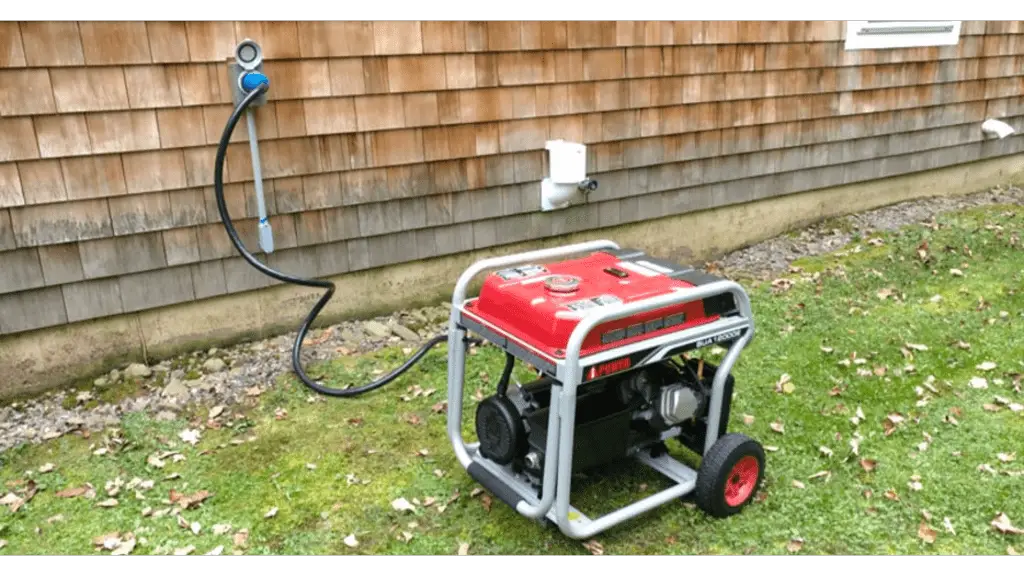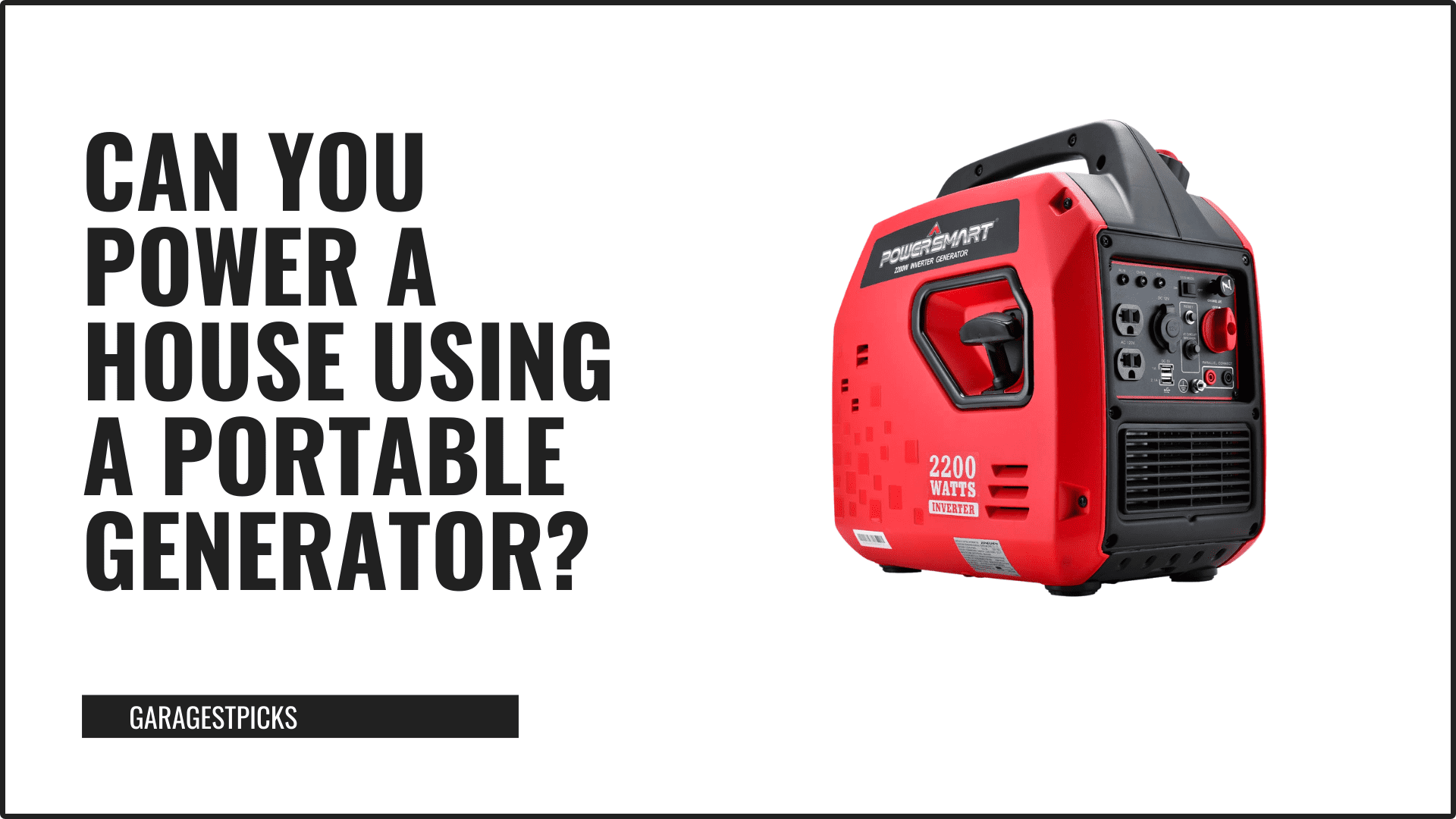Maybe it’s a natural disaster, a bad snowstorm, or maybe they’re just doing work on power lines near your house and you’re left without power. This has left you wondering, “can you power a house using a portable generator?”
Portable generators are not just for emergencies, they can power a whole house as well. A 1000-watt generator can easily power a refrigerator and home security system during power outages. And a bigger 2500-5000 watt generator can even power your air conditioning during blackouts.
Here’s how to size your generator for your needs. Once you know how much power your house needs, you’ll be able to size your generator accordingly.
Calculating your power consumption for powering house using portable generator
To calculate how much power you need, add the wattage of each appliance you use in the house to the running wattage of the portable generator.

The wattage of a refrigerator is around one-third of its operating time within a time cycle, so you will need a generator that has enough surge power to power your refrigerator. Then, multiply the total wattage by the contingency factor of about 15 percent.
There are many ways to calculate the power you use in your home. A good place to start is with your item’s user manual. It usually contains the manufacturer’s suggested wattage requirements for various appliances.
This will help you determine the right size of a portable generator. However, if you are unsure about this information, you can consult a certified electrician. Using the wattage calculator on a generator site can also help you understand your power consumption better.
Usually, wattage requirements are listed on the owner’s manual of a portable generator.
To find out the exact wattage that you need, look at the electrical specification of your devices. Then, subtract each device’s wattage from the portable generator’s total wattage.
Keep in mind that each device has its maximum and minimum wattage requirement. However, the total wattage should not exceed the total output of a portable generator.
Sizing generator to power your house
There are two main factors to consider when sizing a portable generator to your needs: the fuel source and the maximum power consumption.
A 7000-watt portable generator will run long enough, but you might be surprised to find that you will need more than this capacity at times. In such a situation, you should purchase a generator with a capacity of at least 8000 watts.
This will help you avoid blackouts and reduce power demand spikes. It will also reduce the number of power cuts you’ll encounter in a given time. In addition, an 8000-watt generator will minimize blackouts, brownouts, and other power outages.
Additionally, it will also reduce blackouts and power demand spikes, which are common during times of emergency. If you’re running multiple appliances at once, an 8000-watt generator will help you
If you’re concerned about the amount of power you’ll need to operate your appliances, you can consult a wattage calculator.
The wattage requirements of common appliances can be found on the machines themselves or their owners’ manuals. You can also use a generator calculator to determine the exact wattage requirements of different appliances.
However, remember to avoid overloading your generator with appliances you’ll use only occasionally.
Is using a portable generator for home effective?
If you have a power outage, having a portable generator on hand can be a lifesaver. When power is out, you can easily program your generator to come on.
You can keep essential household appliances running and even avoid wasting food. Portable generators are also a great way to save money in the long run.
Listed below are some benefits of owning one. And keep reading to learn how you can benefit from owning a portable generator for your home.
During a power outage, a portable generator can provide the power you need to run appliances such as the refrigerator and lights.
Even the hot water in the gas water heater can be supplied by a portable generator. Using a portable generator is a smart investment for your home if you live in an area prone to storms.
The cost of the generator will help you continue with your essential household appliances even in severe weather.
A portable generator is ideal when used with a manual transfer switch, which is a key safety feature. That way your portable generator becomes extra safe for electronics.
The transfer switch is connected to the generator via a heavy-duty cable called a Genset cord. The Genset cord plugs into a receptacle outside the house, while an interior cable runs from the outlet to the transfer switch.
The electrical energy from the portable generator runs through the interior cable and the transfer switch.
Read also: Can You Use A Jump Starter While Plugged In?

